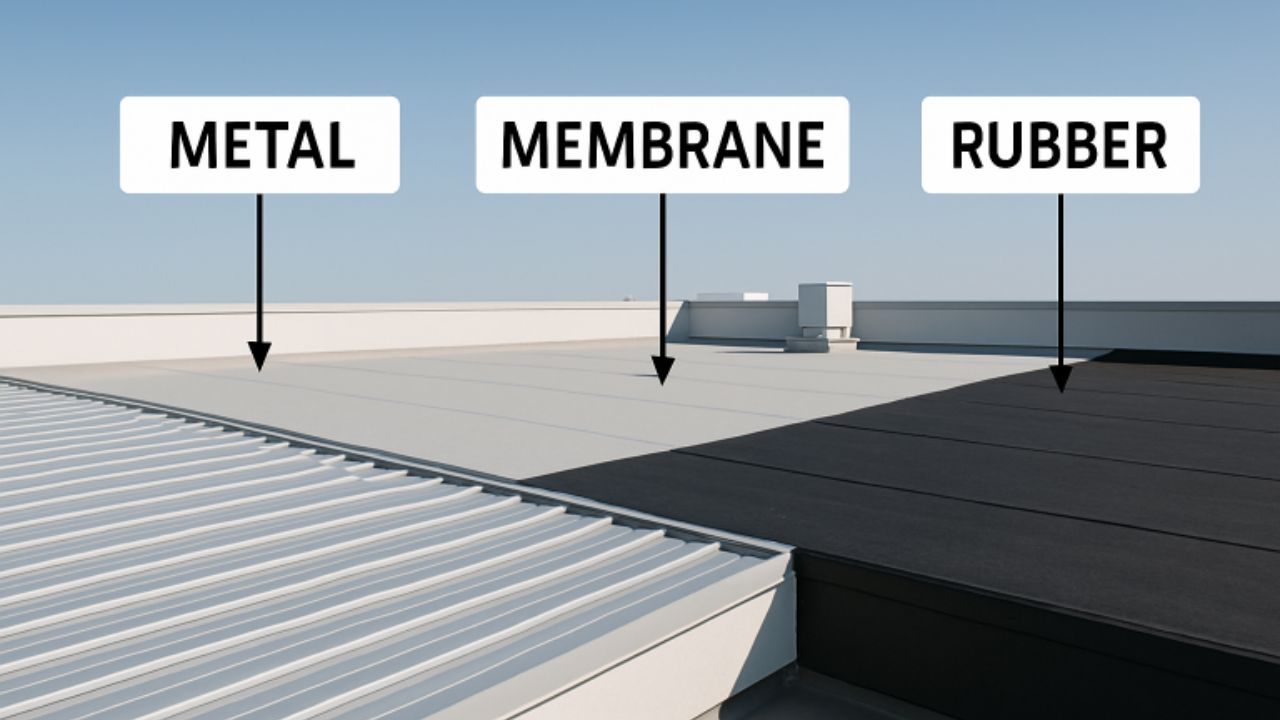- Durable roofing materials are essential for long-term protection and operational efficiency of commercial buildings.
- There is a range of roofing material options, each with distinct benefits and lifespans.
- Key factors such as climate, building use, budget, and energy efficiency must guide the selection process.
- Consistent maintenance is crucial for maximizing the performance and lifespan of any commercial roof.
- The Importance of Durable Roofing in Commercial Buildings
- Popular Roofing Materials for Commercial Buildings
- Factors to Consider When Choosing Roofing Materials
- Maintenance Tips to Extend Roof Lifespan
- Conclusion
Ensuring the longevity and performance of a commercial building starts with a robust and reliable roofing system. Selecting the most suitable roofing material is crucial for protecting the building’s structure, assets, and continuity of business operations. When considering a new installation or replacement, businesses in the Midwest should look for trusted partners for their commercial roof replacement Kansas City projects. Making the right choice not only enhances protection but also reduces long-term costs tied to frequent repairs or early replacement.
The complexities involved in a commercial roofing decision go beyond aesthetics or even upfront expenses. The material you select will impact energy efficiency, maintenance requirements, and the building’s ability to withstand weather extremes. By choosing a solution tailored to the building’s specific needs, property owners can prolong the roof’s lifespan and ensure the safety of both occupants and assets within.
For decision-makers, understanding the variety of roofing materials available, alongside critical selection factors, helps avoid costly mistakes. Strategic choices contribute to a building’s operational efficiency by minimizing environmental damage, lowering utility bills, and reducing insurance risks. Durable roofing becomes an asset, not just a covering, for your commercial property. Failing to prioritize durability can lead to disruptions, unforeseen costs, and a decreased lifecycle value. By incorporating ongoing maintenance and staying informed on emerging roof technologies, business owners establish a proactive approach to property management.
A tough, reliable roof serves as the first line of defense against hazards ranging from severe weather to structural degradation. Beyond basic shelter, commercial roofs influence a building’s energy profile, including insulation performance and heating/cooling demands. Long-lasting materials protect the investment and limit disruptions from unexpected leaks, structural repairs, or insurance claims. In addition, a dependable roofing system ensures occupant safety and can add property value, making it a crucial part of sustainable facilities management. Commercial buildings also face unique pressures due to large roof surface areas and, in many cases, higher foot traffic for maintenance purposes. Choosing the correct materials means factoring in not only immediate protection but also the ongoing wear and tear that naturally occurs with business operations and environmental exposure.
The market offers several commercial roofing solutions, each with its own strengths and suited to specific scenarios. Here are the leading materials for durable commercial roofs:
TPO membranes are prominent in the commercial sector due to their energy efficiency and robust UV resistance. Their highly reflective surface helps lower cooling costs in hot climates, and their flexibility offers reliable weather protection. TPO roofs typically last 20–30 years with proper care.
EPDM, also known as rubber roofing, has earned its reputation for adaptability and resilience. It resists cracking and weathering, which is especially valuable in regions with temperature swings. With a lifespan of 20–25 years, it’s a dependable choice for various commercial structures.
Metal roofing systems are among the most durable, lasting 40–70 years in many cases. They withstand hail, fire, and heavy winds while reflecting solar heat, leading to energy savings. Modern metal roofing also offers design flexibility and can be enhanced with coatings for added protection.
PVC roofing strikes a balance of strength, flexibility, and chemical resistance. Because it stands up particularly well to fats, oils, and harsh chemicals, it’s ideal for restaurants, factories, and facilities with similar exposures. Properly installed PVC systems last 20–30 years and aid energy efficiency efforts.
Evaluating roofing materials requires careful analysis of the building’s unique characteristics and operational requirements:
- Climate: Weather is a decisive factor—roofs in snowy regions need snow-shedding properties (often metal). In contrast, roofs in the sun-drenched areas benefit from reflective membranes such as TPO or PVC.
- Building Use: If the roof will regularly host maintenance workers or equipment, it is advisable to use impact-resistant materials and slip-resistant surfaces. Certain businesses may need specialized protection against chemical exposure or heat.
- Budget: While a lower-cost option may appear attractive upfront, longer-lasting materials reduce total lifecycle expenses because they need fewer repairs and replacements.
- Energy Efficiency: Roofing that reflects sunlight or insulates efficiently can cut annual utility expenses, creating a sustainable and cost-effective facility in the long run.
Even the most advanced roofing systems require consistent attention to realize their full lifespan. Here are crucial maintenance habits to adopt:
- Schedule professional inspections at least twice a year to catch small problems before they become major issues.
- Regularly clean and clear gutters and downspouts to prevent water backup and structural decay.
- Fix minor leaks, punctures, or storm damage promptly to curb larger future expenses.
- Ensure the roof is well-ventilated and insulated to deter temperature-induced stress and moisture issues.
Establishing a thorough preventive maintenance program transforms your roof from a liability into a durable asset. Proactive care increases resistance to the elements and supports compliance with warranty requirements.
Choosing the proper roofing material for a commercial building is not just about immediate protection, but also about long-term efficiency, safety, and asset management. By thoroughly considering climate, building type, budget, and ongoing maintenance, property owners set the stage for fewer disruptions and extended roof life. With ongoing education and a commitment to preventative care, business leaders secure a foundation for durable and cost-effective property management.
You May Also Read: Best Practices for Oil and Gas Accounting

